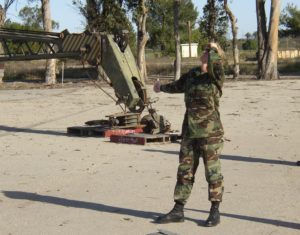A crane operator often needs a second set of eyes, in the form of a qualified signal person, to be able to operate safely, when making blind lifts, for example.
When extending and setting outriggers either the operator or a signal person must have clear view of each outrigger during extension and setting. OSHA Regulation 29CFR 1926.1400 sections 1419 through 1422 state that when a signal person must be provided and the types of signals that are allowed.

Qualified Signal Person-During Operations
During operations requiring signals, the ability to transmit signals between the crane operator and signal person must be maintained. If the ability to signal is interrupted at any time, the operator must safely stop operations until signal transmission is reestablished and a proper signal is given and understood.
OSHA 29CFR 1926.1430 requires signal persons be provided training on how to recognize and avoid the hazards associated with their work.
Qualified Signal Person Work Specifications
Signal person qualifications are specified in section 1428.
Section 1428 – Signal Person Qualifications
Each signal person must know and understand the type of signals used. If hand signals are used, the signal person must know and understand standard hand signals for the type of crane involved in the lift and be competent in the application of the type of signals used.
Signal persons must have a basic understanding of equipment operation and limitations, including the crane dynamics involved in swinging and stopping loads and boom deflection from hoisting loads. In addition they must know and understand the relevant requirements for signals. The signal person must demonstrate that he/she meets these requirements through an oral or written test, and a practical exam. The employer must ensure that the signal person meets these qualification requirements through one of two qualification options:
Option (1) –Third party qualified evaluator. The signal person has documentation from a third party qualified evaluation following appropriate training followed by written and practical examination.
Option (2) – Employer’s qualified evaluator. The employer’s qualified evaluator determines through written and practical testing, that the individual meets the qualification requirements of 29CFR 1926.1400.
The employer is responsible to make the documentation of qualification available at the site while the signal person is employed by the employer. The documentation must specify each type of signaling (e.g., hand signals, radio signals, etc.) for which the signal person meets the requirements.
If subsequent actions by the signal person indicate that the individual does not meet the qualification requirements, the employer must not allow the individual to continue working as a signal person until retraining is provided and a reassessment is made that confirms that the individual meets the requirements of a qualified signal person.